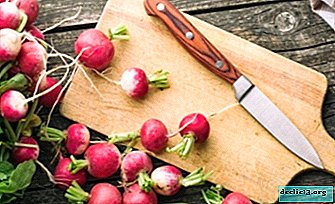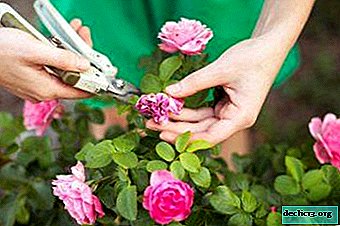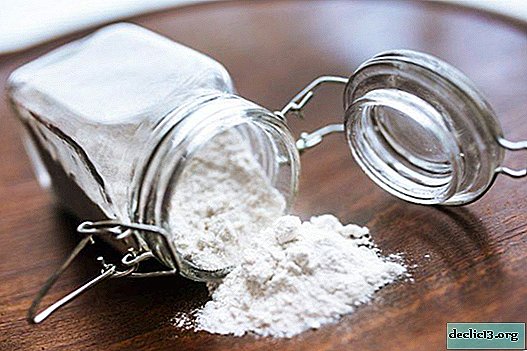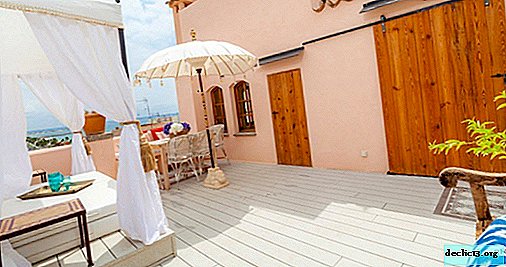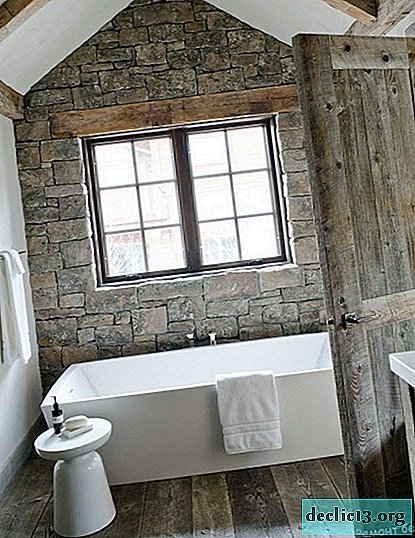Sticky leaves and a white coating on them with a homemade lemon. Why is there such a problem and how to treat the plant?

Lemon is a plant useful for immunity with its fruits. To grow this tropical tree, you need to provide all the necessary conditions as close as possible to the conditions of his homeland.
It is necessary to find the right approach in caring for a lemon, and also to study diseases that are dangerous to it.
In this article we will consider the causes of plaque, its elimination and prevention.
The causes of the problem and how to get rid of it?
It is necessary to separate the sticky and white plaque. The causes of such neoplasms, as a rule, are excessive watering or pests. Next, we consider in detail why this or that type of raid occurs.
Why are sticky leaves from a home plant?
The sticky coating that appeared on the bark and leaves of a lemon tree is a big annoyance for the gardener. Transparent, in consistency resembles atomized syrup. There are several ways to eliminate the liquid, and in order to determine the most suitable one, you should first find out the cause of the sticky layer.
From excessive watering
Pests are not always the culprits of sticky coating on a room lemon. Such a nuisance can arise due to abundant watering, which consequently will lead to rotting of the plant.
If it turns out that the reason is excessive irrigation, then the flow of water should be reduced to 2 times a week.From pests
Shield
 Often the cause of sticky leaves in home-made lemon is scabbard. Signs of a dangerous pest infection:
Often the cause of sticky leaves in home-made lemon is scabbard. Signs of a dangerous pest infection:
- a sticky coating appears on the leaves or trunk;
- brown dry spots may appear;
- the plant dries up.
It is necessary to take timely measures to destroy this parasite, otherwise the plant will dry out and then completely die. There are various methods of treating plants from scale insects:
- Folk methods (recipes). To combat this harmful insect, you can use various chemicals. It should be noted that the fruits will become poisonous and unsuitable for eating. First of all, it is advisable to resort to alternative methods of treating lemon from scabies. Such methods give a good effect and are harmless to humans.
- Soap solution. Mix 5 g of green soap with 2 g of anabazine sulfate in 1 liter of warm water. Rinse affected plants with a ready-made solution. After 24 hours, rinse with clean water. Carry out such processing once a week for a month.
- Tobacco infusion. In 1 liter of water add 50 g of tobacco, mix, let it brew for two days. Spray the finished solution onto the tree 4 times a day.
- Soap-kerosene emulsion. In 1 liter of water add 10 g of kerosene and 5 g of soap. Spray a plant 1-2 times a week.
- Chemicals. Many plant a lemon tree as an element of decoration. In this case, to exterminate the scale shield, you can purchase such drugs as:
- Fitoverm;
- "Aktara";
- "Confodor."
Aphid
 The cause of the appearance of a sticky layer on the leaves of lemon may be aphids. She can get into the house through open windows and doors from a tree or flower garden growing nearby, and can also switch to a lemon from another house plant or a bouquet of flowers. Aphid affects the entire plant, sucking out all the juices, as a result of which the lemon quickly dies.
The cause of the appearance of a sticky layer on the leaves of lemon may be aphids. She can get into the house through open windows and doors from a tree or flower garden growing nearby, and can also switch to a lemon from another house plant or a bouquet of flowers. Aphid affects the entire plant, sucking out all the juices, as a result of which the lemon quickly dies.
In the early stages of infection, it is very difficult to see the insect, but you can identify a dangerous pest by twisted dried leaves with spots.
If these symptoms are detected, immediate measures must be taken to kill the aphids:
- Folk methods (recipes). These methods are easy to prepare. After processing, the possibility of eating fruits is not excluded.
- Solution of laundry soap. Treat the lemon tree with this solution for a week.
- Garlic water. Pour 1 minced head of garlic with boiling water (200 ml). Let the solution brew for 2 days. To process a tree with infusion 1 time in 5 days.
- Nettle broth. 2 tbsp dry collection to insist in a glass of boiling water for 12 hours. Strain the resulting solution and treat the damaged leaves with it.
- Chemicals. Decorative lemon can be treated with such chemicals as:
- Fitoverm;
- "The spark of gold."
To process several times with interruptions per week.
White stains: causes and treatment
The cause of white plaque in the form of stains on the leaves of indoor lemon is a mealybug.Such a coating reminds a piece of cotton wool, it can be transparent, slightly sugary.
From pests
 White plaque can appear only from pests, namely from worms. Improper care, contaminated soil or seedlings - all this can cause the appearance of such a dangerous pest on a tree as a mealybug.
White plaque can appear only from pests, namely from worms. Improper care, contaminated soil or seedlings - all this can cause the appearance of such a dangerous pest on a tree as a mealybug.
He sucks the juices from the whole plant, which leads to diseases and even to his death. You can resort to the following alternative methods of treatment:
- Folk methods (recipes).
- Infusion of garlic with soap. Pour a few cloves of garlic with 0.5 l of hot boiled water. Let it brew for 4 hours. Strain, then apply to the affected areas of lemon.
- Soap and tobacco solution. Dissolve 50 g of soap in 500 ml of water, then pour 50 g of denatured alcohol and 20 g (1.5%) of tobacco extract. Add another 500 ml of water. The resulting solution to treat a diseased tree.
- Chemicals. When a tree is infected with a mealybug, drugs such as:
- Karbofos;
- Intavir
- "Decis" and others.
Spray several times at weekly intervals.
Prevention
Regular inspection of the plant and temporary prevention of possible diseases can prevent the sad consequences.
It is necessary to periodically remove all dried leaves from the plant.. It is also important to monitor the temperature and water conditions. Several times a month, the plant needs to be washed. On clean plants, pests start much less frequently. You can wipe the lemon with a soap solution, which will prevent the appearance of various pests.




